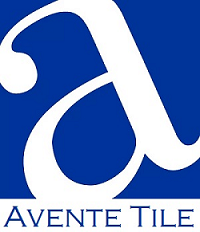How Encaustic Cement Tiles are Made
Encaustic cement tiles or cement tiles are completely handmade. They are made of concrete and the color in the pattern comes from mineral pigments which are mixed and poured into a mold. This method was developed in the mid-19th century and hasn't changed much since then. The pattern is not painted and glazed like most decorative ceramic tiles. The pattern is inlaid into the body of the tile using a mold.
Encaustic cement tiles are considered a "green product" because the tiles are not fired in a kiln and may feature locally sourced products in the manufacturing process. The tiles are perfect for both indoor and outdoor spaces not subject to hard freezes. The tiles are durable and best of all, they are completely customizable.
Encaustic cement tiles, or cement tiles, are made by hand using a multi-step process. Three different layers make up each encaustic cement tile. The first layer creates the top, or patterned part of the tile. To create the design, a metal pattern of the design (like a cookie cutter) is placed at the bottom of a square mold or frame that determines the tile's format (shape). Then a color mixture of marble powder, white cement, and natural color pigments is poured into each section of the metal pattern.
The color layer is prepared in batches and every component is weighed in order to guarantee color consistency. The color is mixed in a horizontal mixer to blend the mixture. Water is added to the color mixture and hand poured into the different sections of the mold that creates the pattern. If no pattern is required, the same color is used for the entire color layer and no pattern mold is required. The thickness of the color layer will always be between 3 and 5 millimeters (about 5/8" thick).
Materials utilized in the color layer:
- White Portland cement
- Marble dust
- Silica sand
- Calcium carbonate
- Mineral pigments like iron, cobalt and chromium oxides
Two layers of cement and sand are poured on top of the color layer. The middle layer of the tile consists of a mixture of Portland cement and fine sand, which forms a strong bond between the patterned layer and the base of the tile. The third, or base, layer of the encaustic tile is created using a mix of fine and regular cement, sand and limestone powder.
Materials used in the tile body (Layer 2 and 3):
- Gray Portland cement
- Sand
- Calcium carbonate
Once the three layers have been poured, each encaustic cement tile is hydraulically pressed into a dense, heavy tile. The hydraulic press applies 1,700 PSI of pressure.
The tile is then submerged in water for 24 hours to guarantee proper cement hydration and left to dry or cure for 10 days. Tiles can be inspected at this point but cement tiles must be air-dried for 28 days to fully cure the cement. The curing process is what gives cement tile it's strength. After 28 days, the tiles will have achieved obtained 98% of their strength. Once the tiles have completely dried, they are ready to be carefully packaged and shipped.
Making Cement Tiles
Watch cement tiles being made. The pigmented cement is hand-poured into the patterned mold. The mold is removed. Two additional layers of cement are added for strength and water absorption. The bolted frame holds the cement in place until it is hydraulically pressed. Removing the frame exposes the tile!
Making Plain or Solid Color Cement Tiles
Watch solid-color cement tiles being made. The pigmented cement is hand-poured into the mold. Additional layers of cement are added for strength and water absorption. The cement tile is hydraulically pressed. Removing the frame, the tile is turned out.
Making Cement Tile Hexagons
Watch hexagonal cement tiles being made. Pigmented cement is hand-poured into a patterned mold. The mold is removed and additional layers of cement are added for strength and water absorption before the tile is hydraulically pressed. See the hexagon-shaped tile turned out.
